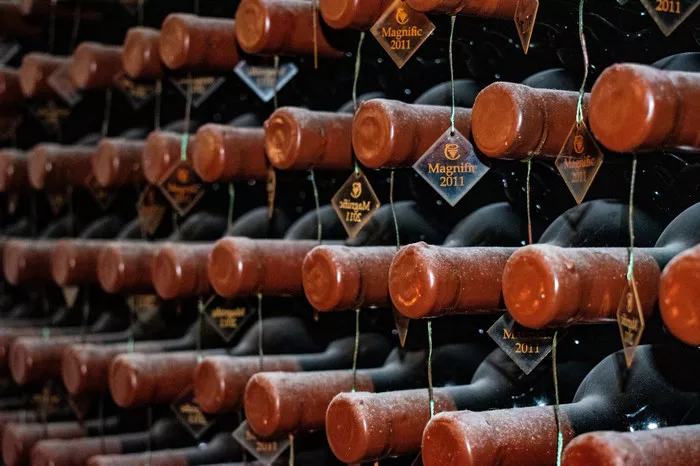When it comes to wine, especially white wines, the debate over sweetness can be intricate. Among the plethora of options available, Chablis and Chardonnay often find themselves in the spotlight. Both are esteemed for their distinct characteristics, but when it comes to sweetness, which one takes the crown? Let’s delve into the nuances of each to find out.
Understanding Chablis and Chardonnay
To comprehend the sweetness levels of Chablis and Chardonnay, it’s essential to grasp their origins and production processes. Chablis hails from the Chablis region in France, renowned for its crisp, mineral-driven wines crafted from Chardonnay grapes. On the other hand, Chardonnay, a versatile grape variety, is cultivated worldwide, producing a wide spectrum of styles ranging from lean and steely to opulent and buttery.
Terroir and Influence on Sweetness
The concept of terroir plays a pivotal role in shaping the flavor profile and sweetness of wines. Chablis, with its cool climate and limestone-rich soils, fosters grapes with high acidity and pronounced mineral notes. These factors contribute to the characteristic dryness of Chablis wines, making them an ideal choice for those seeking a crisp, refreshing sip without excessive sweetness. Conversely, Chardonnay’s sweetness can vary significantly depending on its terroir. Grapes grown in cooler regions tend to yield wines with higher acidity and less residual sugar, resulting in a drier taste profile. In contrast, Chardonnay from warmer climates may exhibit riper fruit flavors and higher levels of residual sugar, lending a perceived sweetness to the wine.
Winemaking Techniques: Influence on Sweetness
Winemaking techniques also play a crucial role in determining the sweetness of Chablis and Chardonnay. Chablis producers typically employ minimalist approaches, opting for stainless steel fermentation and aging to preserve the purity of the fruit and accentuate the wine’s natural acidity. This technique results in a bone-dry wine with minimal residual sugar. In contrast, winemakers crafting Chardonnay have a broader arsenal of tools at their disposal. Techniques such as malolactic fermentation, oak aging, and lees stirring can impart richness, creaminess, and perceived sweetness to Chardonnay wines. While these methods enhance complexity and mouthfeel, they can also elevate the wine’s overall sweetness, particularly in styles labeled as “oaked” or “buttery.”
Style and Sweetness Perception
The stylistic preferences of winemakers and consumer demand also influence the sweetness levels of Chablis and Chardonnay. Chablis is celebrated for its lean, unoaked style, which prioritizes purity of fruit and minerality over richness and sweetness. As a result, Chablis wines are generally perceived as drier compared to their Chardonnay counterparts. However, within the realm of Chardonnay, there exists a spectrum of styles catering to diverse palates. Those favoring a crisper, less sweet profile may opt for Chardonnays labeled as “unoaked,” “Chablis-style,” or “cool climate,” which showcase bright acidity and minimal oak influence. Conversely, fans of richer, sweeter wines may gravitate towards “oaked,” “buttery,” or “New World” Chardonnays, characterized by lavish oak aging, malolactic fermentation, and a plush mouthfeel.
Food Pairing Considerations
The sweetness levels of Chablis and Chardonnay also play a pivotal role in determining their compatibility with various cuisines. Chablis, with its high acidity and dry profile, excels as a versatile food companion, complementing a wide array of dishes ranging from fresh seafood and salads to poultry and creamy sauces. Its crisp, refreshing nature serves as a palate cleanser, making it an ideal accompaniment to rich or fatty foods. In contrast, the sweetness of Chardonnay can either enhance or compete with food flavors depending on the style of the wine. Lighter, crisper Chardonnays shine alongside seafood, salads, and lighter fare, while fuller-bodied, sweeter Chardonnays excel with richer dishes such as lobster, roasted chicken, and creamy pastas.
Consumer Preferences and Market Trends
Consumer preferences and market trends also shape the perceived sweetness of Chablis and Chardonnay. In recent years, there has been a noticeable shift towards drier, more restrained styles of wine, driven by health consciousness and a desire for authenticity and terroir expression. This trend has favored Chablis, renowned for its lean, mineral-driven character and minimal intervention winemaking practices. Conversely, the trend towards lighter, fresher wines has prompted some Chardonnay producers to dial back on oak and malolactic fermentation, resulting in crisper, less sweet expressions of the varietal. Additionally, the rise of sparkling Chardonnay wines, such as Blanc de Blancs Champagne and other méthode traditionnelle sparkling wines, offers consumers a dry, effervescent alternative to still Chardonnay with lower perceived sweetness.
Conclusion
In the debate over which is sweeter, Chablis or Chardonnay, the answer lies in the nuances of terroir, winemaking techniques, stylistic preferences, and consumer perception. While Chablis is celebrated for its crisp, mineral-driven dryness, Chardonnay’s sweetness can vary significantly depending on factors such as terroir, winemaking style, and consumer demand. Ultimately, the sweetness of both wines is subjective and contingent upon individual taste preferences and the context in which they are enjoyed. Whether one prefers the lean, mineral purity of Chablis or the diverse spectrum of styles offered by Chardonnay, there is a wine to suit every palate and occasion.


